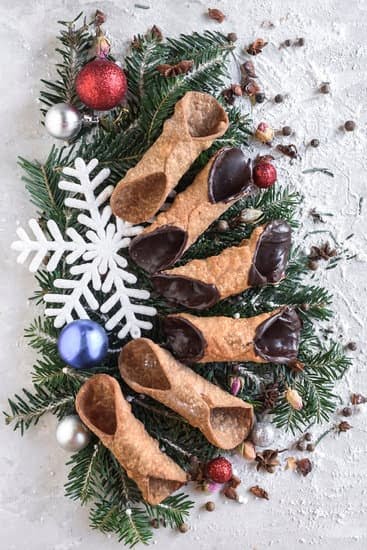Are you looking to create a stunning centerpiece for your next special occasion? Look no further than the decorated fruit cake. From weddings to holiday gatherings, a beautifully crafted fruit cake can add an elegant touch to any event. In this article, we will explore the art of decorating fruit cakes, from its rich history to tips for baking the perfect cake and unique ways to adorn it with a variety of fruits.
The decorated fruit cake has been a beloved dessert choice for centuries, often associated with celebrations and festivities. Its history is as rich and varied as its flavors and designs. Whether you are a seasoned baker or a novice in the kitchen, learning how to create and decorate a fruit cake can be a rewarding experience.
In the following sections, we will delve into the fascinating history of fruit cakes, provide insights into choosing the perfect fruits for your creation, explore the art of decorating these cakes, offer valuable tips for baking success, share unique decoration ideas, and even showcase some incredible examples of decorated fruit cakes from around the world. So let’s embark on this journey together and discover why decorated fruit cakes are the perfect dessert choice for any occasion.
The History of Fruit Cakes
In the 18th century, fruit cakes became even more popular as dried fruits such as raisins, prunes, and dates became more accessible. These ingredients were expensive and considered a luxury, so fruit cakes were reserved for special occasions such as weddings and holidays.
The tradition of decorating fruit cakes with intricate designs and patterns also emerged during the Victorian era. It was during this time that royal icing and marzipan became popular choices for decoration. Today, fruit cakes are still a beloved dessert for many cultures around the world, with each country adding its own unique twist to the classic recipe.
| Year | Event |
|---|---|
| Ancient Egypt | Fruitcakes made with preserved fruits, nuts, and honey |
| Middle Ages | Fruitcakes become a symbol of celebration during Christmas season |
| 18th Century | Raisins, prunes, and dates become popular ingredients for fruitcakes |
Choosing the Perfect Fruits for Your Fruit Cake
When it comes to creating a delicious and visually appealing decorated fruit cake, choosing the right fruits is crucial. The choice of fruits not only affects the flavor of the cake but also plays a major role in its overall appearance. The most common fruits used in fruit cakes include raisins, sultanas, currants, and candied fruits such as cherries, pineapple, and citron. These fruits add sweetness, texture, and color to the cake, making it a delightful treat for any occasion.
It’s important to consider the flavor profile of each fruit when selecting them for your fruit cake. For example, while raisins and sultanas provide a natural sweetness and chewy texture, candied fruits like cherries and citrus peels add a burst of tanginess and vibrant colors to the cake. It’s also essential to ensure that the fruits are of high quality and have been properly preserved to maintain their freshness.
In addition to traditional fruits, you can also experiment with dried fruits like apricots, figs, dates, or cranberries to add unique flavors and textures to your fruit cake. Some bakers also choose to soak the dried fruits in rum or other liquors before adding them to the batter, which enhances their flavor and moistness.
Ultimately, the key to choosing the perfect fruits for your decorated fruit cake lies in balancing flavors, textures, and colors to create a harmonious and visually stunning dessert.
| Common Fruits for Fruit Cakes | Unique Dried Fruits | Preservation Method |
|---|---|---|
| Raisins | Apricots | Soaking in liquor |
| Sultanas | Figs | Air-drying or sun-drying |
| Currants | Dates | Candying or crystallizing |
The Art of Decorating a Fruit Cake
Choosing the Right Design
When it comes to decorating a fruit cake, the design options are endless. From intricate piping and delicate sugar flowers to simple yet elegant arrangements of fresh fruits and nuts, the key is to choose a design that complements the flavor and style of your fruit cake. Consider the occasion for which the cake is being served and let that guide your design choices.
Tools and Techniques
Before you begin decorating your fruit cake, it’s important to have the right tools and techniques at your disposal. Invest in quality piping bags, tips, and spatulas for smooth icing application. If you plan on using fondant, make sure to have a good rolling pin and sharp cutting tools. Practice different techniques such as royal icing piping, buttercream spread, or fondant sculpting to see which method works best for your desired design.
Adding Personal Touches
One of the joys of decorating a fruit cake is adding personal touches that make it unique and special. Consider incorporating meaningful symbols or colors into your design that reflect the theme of the event or convey a personal message. For example, if you’re making a decorated fruit cake for a wedding, you may want to include intricate sugar flowers that match the bride’s bouquet or use edible gold leaf for an extra touch of luxury.
Mastering the art of decorating a fruit cake takes time and practice, but with dedication and creativity, you can create stunning masterpieces that will delight your family and friends. Whether you’re looking to enhance your baking skills or simply want to impress at your next event, learning how to decorate a fruit cake is a rewarding endeavor that will surely pay off in delicious rewards.
Tips for Baking the Perfect Fruit Cake
Baking the perfect decorated fruit cake requires a careful selection of ingredients and a precise baking process. Here are some tips to ensure that your fruit cake turns out delicious and visually appealing:
- Choose the right fruits: When baking a fruit cake, it’s important to select high-quality fruits. Dried fruits such as raisins, cranberries, apricots, and cherries are popular choices for fruit cakes. Ensure that the fruits are plump, moist, and free from any signs of spoilage.
- Soak the fruits: To enhance the flavor and texture of the fruit cake, consider soaking the dried fruits in rum or brandy overnight. This will not only add depth to the flavor but also keep the fruits moist during baking.
- Use quality spices: A blend of warm spices such as cinnamon, nutmeg, and allspice can elevate the flavor profile of your fruit cake. Be sure to use fresh spices for optimal results.
In addition to these tips, it’s crucial to pay attention to the baking process itself. Fruit cakes require slow and low baking to prevent them from drying out. Covering the top with foil halfway through the baking process can also help prevent over-browning. By following these tips and techniques, you can achieve a perfectly baked decorated fruit cake that is both delicious and visually stunning.
Lastly, don’t forget about presentation. The way you present your decorated fruit cake can truly make it a masterpiece. Whether you opt for a traditional icing design or more creative fondant decorations, putting effort into how your fruit cake looks will certainly impress your guests while still tasting delicious.
Unique Ways to Decorate Your Fruit Cake
When it comes to decorating a fruit cake, there are countless ways to make your dessert stand out. Here are some unique and creative ideas to decorate your decorated fruit cake:
- Edible Flowers: Adding edible flowers as decoration not only adds a beautiful pop of color but also gives your fruit cake a unique and elegant touch. You can use fresh edible flowers such as pansies, violets, or roses, or even opt for crystallized edible flowers for a more whimsical look.
- Chocolate Garnishes: Incorporating chocolate garnishes into your fruit cake’s decoration can add a touch of indulgence. Whether you choose to drizzle melted chocolate on top, create chocolate curls with a vegetable peeler, or use molded chocolate shapes, the addition of chocolate will surely elevate the overall appearance of your cake.
- Marzipan Fruits: Marzipan fruits are not only visually appealing but also add a burst of flavor to your fruit cake. You can create tiny marzipan fruits such as apples, pears, and berries to place on top of your cake for an added decorative element.
Adding one or more of these unique decorations will take your decorated fruit cake from ordinary to extraordinary.
Another creative way to decorate a fruitcake is by incorporating different textures and patterns. Consider using textured utensils or stencils to create intricate designs on the surface of your cake before adding any icing or fondant.
Additionally, consider incorporating non-traditional elements such as edible gold or silver leaf, colorful sprinkles, or even small meringue kisses for an unexpected twist on traditional fruit cake decoration. These unique touches will make your decorated fruit cake truly standout at any occasion.
Incorporating these unique ideas into the decoration of your fruit cake will ensure that it not only tastes delicious but also looks stunning and unforgettable. Get creative and have fun experimenting with different ways to decorate your next masterpiece.
The Best Icing and Fondant Recipes for Fruit Cakes
When it comes to decorating a fruit cake, the right choice of icing or fondant can make all the difference. The best icing and fondant recipes for fruit cakes can elevate the appearance and taste of your dessert, turning it into a masterpiece that will impress your guests.
Classic Royal Icing
A classic choice for fruit cakes, royal icing is made with egg whites or meringue powder, powdered sugar, and a few drops of lemon juice. This type of icing dries to a hard, shiny finish, making it perfect for creating intricate designs. It can also be used to create a smooth surface for other decorations like marzipan or fondant.
Fondant
Fondant is a versatile option for decorating fruit cakes. It can be rolled out and draped over the cake to create a smooth finish, or molded into various shapes and figures. Fondant can also be flavored and colored in any way you desire, allowing for endless creativity in decorating your fruit cake.
Cream Cheese Frosting
For those who prefer a softer and creamier option, cream cheese frosting is a popular choice for decorating fruit cakes. This type of frosting pairs well with the rich flavors of the cake and can be flavored with extracts or citrus zest for added depth.
With these best icing and fondant recipes for fruit cakes, you can turn your decorated fruit cake into a work of art that not only looks stunning but also tastes delicious. Whether you choose royal icing, fondant, or cream cheese frosting, each option provides an opportunity to showcase your creativity and add a personal touch to your dessert creation.
Fruit Cake Masterpiece
Fruit cakes have been a popular dessert choice for many special occasions around the world. From weddings to holidays, these delicious and visually appealing treats have become a staple in many cultures. The art of decorating a fruit cake has evolved over time, with bakers finding unique and creative ways to showcase their skills through beautifully adorned cakes.
In some countries, such as Italy and Germany, fruit cakes are often associated with Christmas and are an essential part of the holiday season. Studded with nuts and dried fruits, these cakes are often soaked in rum or other spirits to enhance their flavor.
They are then elaborately decorated with icing, marzipan, and edible decorations. In contrast, in the United Kingdom, fruit cakes are often served at weddings and can be seen adorned with intricate designs made from fondant or royal icing.
The art of decorating a fruit cake truly comes to life when bakers use their creativity to design one-of-a-kind masterpieces. Some may opt for a classic look with traditional piped icing roses, while others may choose a more modern approach by incorporating fresh flowers or edible gold leaf. No matter the style, decorated fruit cakes continue to be a favorite dessert choice for any special occasion due to their beauty and delicious taste.
Conclusion
In conclusion, decorated fruit cakes are the perfect dessert choice for any occasion. With their rich history, delicious variety of fruits, and beautiful decor, these cakes are sure to be a hit at any event. Whether it’s a holiday gathering, a wedding celebration, or simply a special family dinner, a beautifully decorated fruit cake can steal the show.
The art of decorating a fruit cake is not only visually appealing but also adds an extra layer of flavor and texture to the cake. The combination of candied fruits, nuts, and glazes creates a masterpiece that is as pleasing to the palate as it is to the eyes. Additionally, the variety of ways in which a fruit cake can be decorated ensures that there is something for everyone’s taste and style.
Furthermore, with the best icing and fondant recipes for fruit cakes readily available, it has never been easier to create your own personalized decorated fruit cake. Whether you prefer a traditional royal icing or a modern fondant design, there are endless possibilities to make your fruit cake truly unique. With so many options for customization and personalization, it’s no wonder that decorated fruit cakes remain a timeless and beloved dessert choice for any occasion.
Frequently Asked Questions
How Do You Decorate a Fruitcake?
Decorating a fruitcake can be done in various ways. One common method is to glaze the top of the cake with apricot jam and then arrange dried or candied fruits on top. Another option is to cover the cake with marzipan and royal icing, creating a smooth surface for decoration.
How Do You Garnish a Fruit Cake?
Garnishing a fruitcake is all about adding those final touches to make the cake visually appealing. Some popular garnishes include fresh berries, mint leaves, edible flowers, or even a light dusting of powdered sugar for a simple yet elegant finish.
How Many Weeks Before Christmas Should You Make a Christmas Cake?
Traditionally, Christmas cakes are made several weeks in advance to allow the flavors to develop and the cake to mature. Many bakers start making their Christmas cakes anywhere from 4 to 12 weeks before Christmas Day. This extended period also allows for feeding the cake with alcohol or fruit juice at regular intervals for added moisture and flavor.

Welcome to our cake decorating blog! My name is Destiny Flores, and I am the proud owner of a cake decorating business named Cake Karma. Our mission is to provide delicious, beautiful cakes for all occasions. We specialize in creating custom cakes that are tailored specifically to each customer’s individual needs and tastes.





